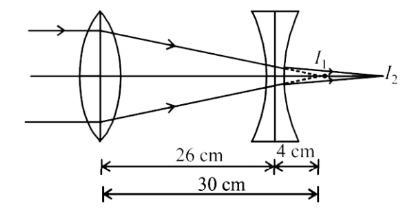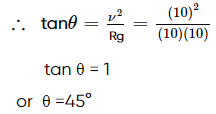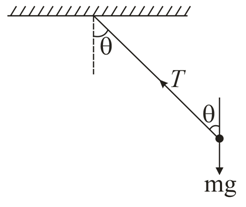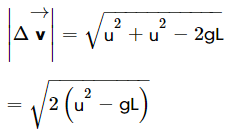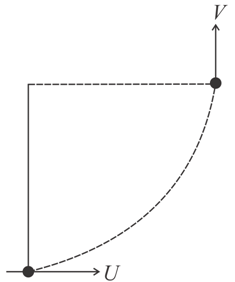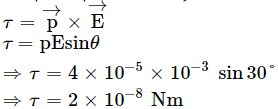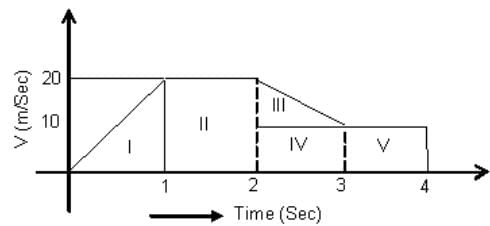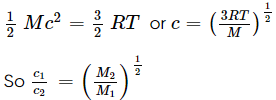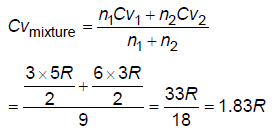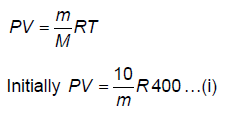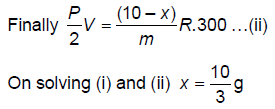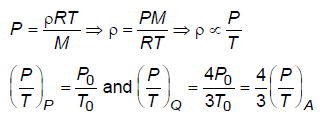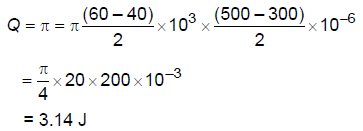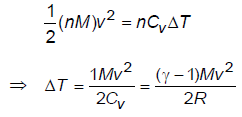NEET Mock Test - 1 - NEET MCQ
30 Questions MCQ Test NEET Mock Test Series - Updated 2025 Pattern - NEET Mock Test - 1
Consider the following statements (A) and (B) and identify the correct answer.
Statement I (A): A zener diode is connected in reverse bias, when used as a voltage regulator.
Statement I (B): The potential barrier of p-n junction lies between 0.1 V to 0.3 V.
According to Newton, the viscous force acting between liquid layers of area A and velocity gradient Δv/Δz is given by  where η is constant called coefficient of viscosity. The dimensional formula of η is:
where η is constant called coefficient of viscosity. The dimensional formula of η is:
 where η is constant called coefficient of viscosity. The dimensional formula of η is:
where η is constant called coefficient of viscosity. The dimensional formula of η is: The size of the image of an object, which is at infinity, as formed by a convex lens of focal length 30 cm is 2 cm. If a concave lens of focal length 20 cm is placed between the convex lens and image at a distance of 26 cm from the convex lens, calculate the new size of the image.
The potential energy of a particle varies as

For 0≤ x ≤ 1, the de-Broglie wavelength is λ1 and for x > 1 the de-Broglie wavelength is λ2. The total energy of the particle is 2E0. Find λ1/λ2
A car is moving in a circular horizontal track of radius 10 m with a constant speed of 10 m s−1. A plumb bob is suspended from the roof of the car by a light rigid rod. The angle made by the rod with the vertical is
(Take g=10 m s−2)
On seeing a traffic signal 400 m ahead, a driver applied brakes to his vehicle. At the time of applying brakes, the vehicle was moving at the rate of 15 ms-1 and started retarding at the rate of 0.3 ms-2. The distance of the vehicle from the traffic signal after one minute was
Two satellites of Earth, S1 and S2, are moving in the same orbit. The mass of S1 is four times the mass of S2. Which of the following statements is true?
The time period of an earth satellite in circular orbit is independent of
A particle is fired with velocity u making angle θ with the horizontal. What is the magnitude of change in velocity when it is at the highest point?
A black body of temperature T is inside a chamber of temperature T0. Now the closed chamber is slightly opened to the sun such that the temperature of black body (T) and chamber (T0) remains constant. Then,
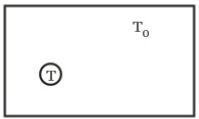
A stone tied to a string of length L is whirled in a vertical circle with the other end of the string at the centre. At a certain instant of time, the stone is at its lowest position, and has a speed u. The magnitude of the change in its velocity as it reaches a position, where the string is horizontal, is
Following graph is showing the variation of potential energy between a pair of nucleons as a function of their separation. Indicate the regions A and B.
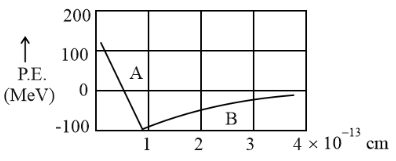
Two nucleons are at a separation of one Fermi. Protons have a charge of +1.6 × 10−19C. The net nuclear force between them is F1, if both are neutrons, F2, if both are protons F3, if one is proton and the other is neutron, Then:
An electric dipole of dipole moment 4×10−5 Cm is placed in a uniform electric field of 10−3 NC−1 making an angle of 30° with the direction of field. Determine the torque exerted by the electric field on the dipole.
The variation of velocity (in m/s) with time (in s) of a particle going along a straight line is shown in the figure. Calculate the distance traversed in 4 seconds.
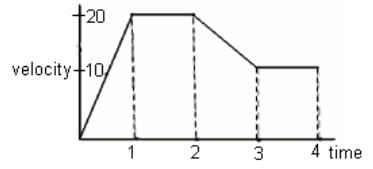
If the molecular weight of two gases are M1 and M2, then at a temperature the ratio of RMS velocity c1 and c2 will be
The change in internal energy of a thermodynamical system which has absorbed 5000 cal of heat and does 5000 J of work is
Three moles of nitrogen is mixed with six moles of helium. The effective molar specific heat of the mixture at constant volume is
Directions: In the following question, two statements are given. One is assertion and the other is reason. Examine the statements carefully and mark the correct option.
Assertion (A): Kinetic energy is zero to move a positive test charge from infinity to the particular point against the electrostatic force due to the electric field.
Reason (R): Kinetic energy is directly proportional to the mass, that's why kinetic energy is zero for test charge.
A vessel has 10 g of hydrogen gas at pressure P and temperature 400 K. A small hole is made in it so that hydrogen leaks out. How much hydrogen leaks out if the final pressure becomes half and temperature becomes 3/4th of its previous value?
If three molecules of oxygen at 27ºC have velocities 0.5 km/s, 1 km/s and 2 km/s respectively. Then their root mean square speed will be
Temperature versus pressure graph of an ideal gas is shown in the figure. If density of gas at point P is then density of gas at point Q will be
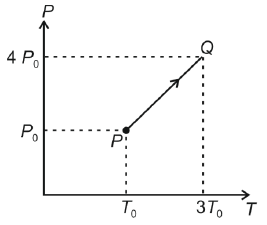
For a rigid diatomic molecules, molar specific heat at constant pressure is given by CP = R/x, where R is universal gas constant and x is number value. Then 3.5x will be
Which of the following is not an assumption of kinetic theory of gases?
Which of the following law of thermodynamics forms the basis for the definition of temperature?
Which of the following diagram represent the isometric process correctly?
Assertion (A): Classical Physics mainly includes subjects like Mechanics, Electrodynamics, Optics and Thermodynamics.
Reason (R): The macroscopic domain includes phenomena at the laboratory, terrestrial and astronomical scales.
The work done by the system in the cyclic process as shown in figure is
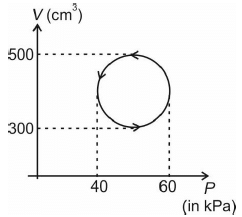
A cyclic process for one mole of an ideal gas is shown in the V–T diagram. The work done by the gas in AB, BC and CA respectively are
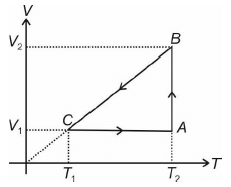
A box of negligible mass containing n moles of an ideal gas of molar mass M and adiabatic exponent moves with constant speed v on a smooth horizontal surface. If box suddenly stops, then change in temperature of gas will be
|
1 videos|18 docs|80 tests
|





